- Nhận đường liên kết
- Ứng dụng khác
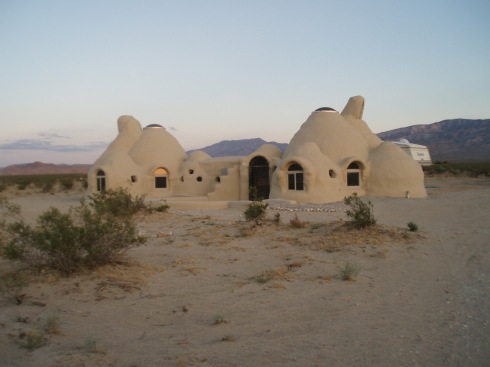
In the 1980s NASA challenged architects to invent a way of constructing buildings on the moon or Mars where traditional building materials would not be available. An Iranian American architect named Nader Khalili came up with a simple & ingenious concept which involved minimum material and time. Khalili’s idea was to fill long plastic tubes with moon dust or space rock and then build dome-shaped buildings from these sandbags (judiciously braced with metal wires). Although NASA has not yet used the idea to build any space bases, the architectural and building style which Khalili invented has taken off here on Earth, where it can be used to quickly make highly stable, inexpensive structures.
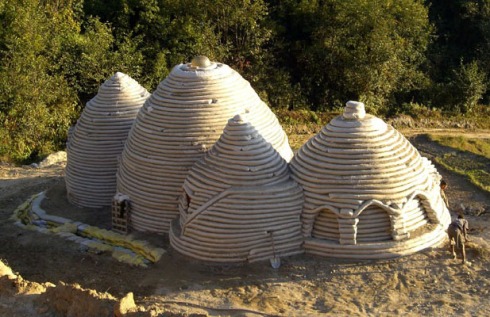

The style of crafting domes out of plastic bags filled with local earthen material is known as super adobe. Khalili initially thought that his buildings would be used as temporary structures for refugees or disaster victims who had lost their homes, however, when plaster or cement is added to the buildings they can become surprisingly permanent and elegant. Super adobe architecture results in beehive shaped structures filled with arches, domes, and vaults. Windows and doors can be created by putting inserts into the bags and then building sandbag arches around them, or arch-shaped holes can be sawed into the finished plastered domes. Superadobe domes can be beautifully finished with tiles, glass shards, or other decoration or they can be smoothly plastered. Khalil created a finish which he called “reptile” where the domes were covered with softball sized balls of concrete and earth. Reptile finish prevented cracking by creating paths for the structural stress caused as the building settling and by heating/cooling expansion and contraction.
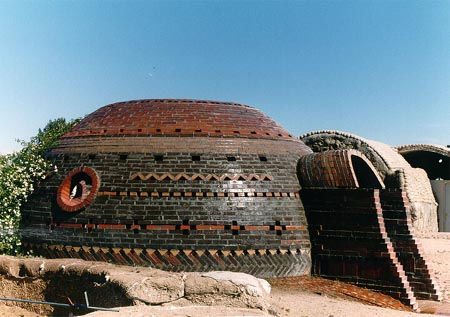
Superadobe architecture is best suited for the dry hot southwest, but can be used elsewhere (especially if the builder adds a layer of insulation) and can employ a variety of available fill materials. If the builder uses earth and gravel to create small domes the buildings are surprisingly resistant to earthquakes, floods, and gunfire. Additionally earthbag buildings are cheap and easily constructed by unskilled builders. The fact that wood is not required has made the style a focus of environmentalists and green builders. I am a huge fan of domes, but they are rarely seen outside of huge expensive buildings like churches, legislative houses, and mansions for rich eccentrics. This paucity of domes could be corrected with more superadobe architecture. Imagine if you could live in an elegant little superadobe dome house with circular woven carpets and little round hearths! The organic shape of the small houses makes them blend in perfectly with succulent gardens informal flowers and unkempt fruit trees. Some builders even go a step farther and cover the entire building with grass and plants. I would like to see more such structures built here on Earth and hopefully someday farther afield.
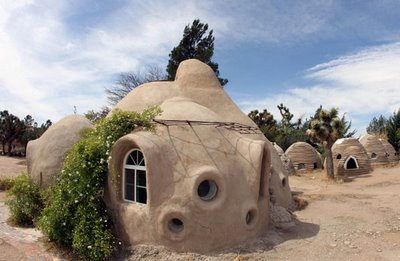
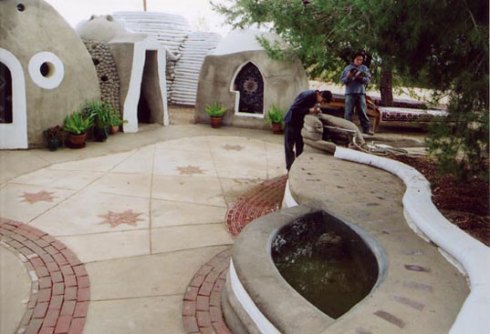
Teal
- Nhận đường liên kết
- Ứng dụng khác
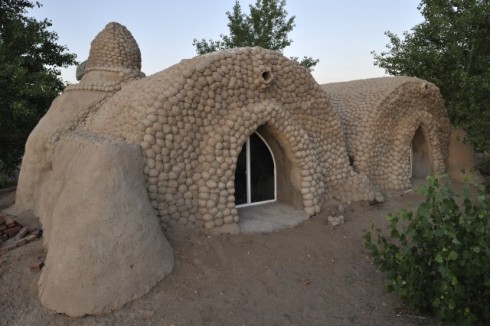
Nhận xét
Đăng nhận xét